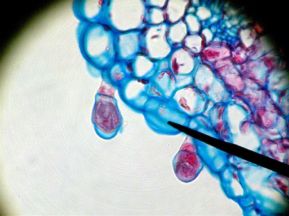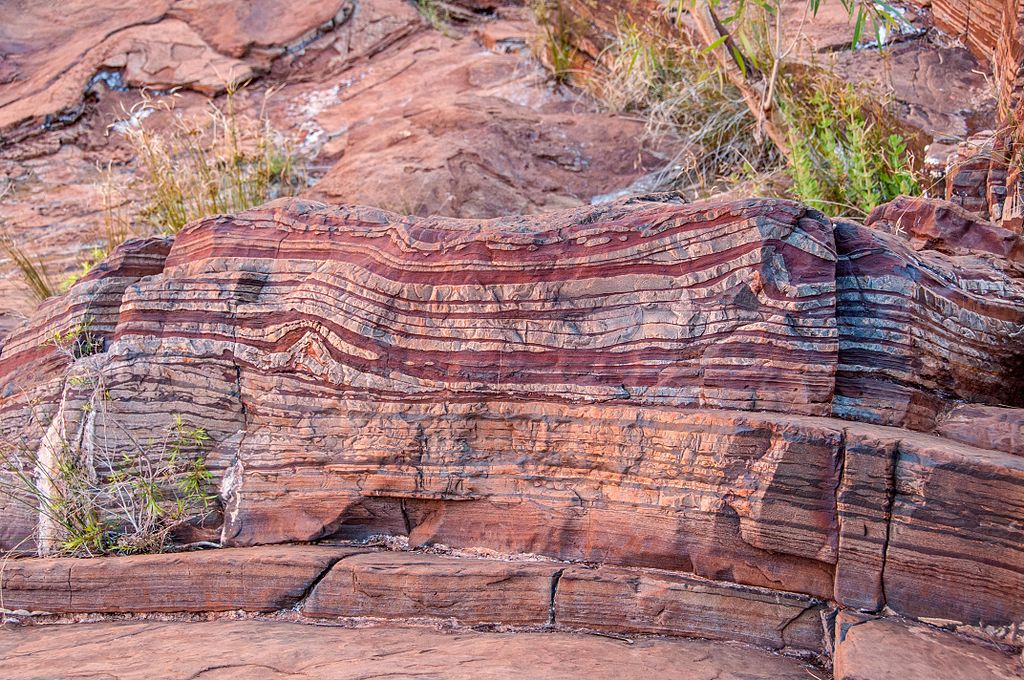
For most of the time that life has existed on Earth, it was in a very primitive form – and limited in diversity. (Prokaryotes replicate by binary fission, so there isn’t a tonne of opportunity for genetic diversity within a species.) At some point, scientists hypothesise, some bacteria engulfed some other bacteria, giving rise to eukaryotes and eventually multi-cellular organisms (remember that “eukaryote” and “multi-cellular organism” are not synonymous!). Unlike prokaryotes, eukaryotes contain organelles, DNA in a distinct nucleus, and can reproduce sexually – which increased (and continues to increase) diversity of species. It’s thought that one bacteria engulfed another and they both continued to exist afterwards because it was mutually beneficial – that is, the engulfed bacteria benefited from being inside of another bacteria, and the engulfing bacteria benefited from having something inside it. This is the endosymbiotic theory that comes up often in biology classes.
Eukaryotes probably came into existence about 1.8 billion years ago (according to the fossil record, although scientists don’t all agree on this date), around or after the time of the Great Oxygen Crisis. The “Great Oxygen Crisis” was the shift from an Earth that was pretty much devoid of oxygen to one that had lots of oxygen, and is estimated to have occurred some time between 2.5 and 1.8 billion years ago. How do we know it happened around that time? There are several pieces of evidence.
Firstly, prior to the abundance of oxygen on Earth, iron that was around existed in a reduced state (because there wasn’t oxygen to oxidise it). This meant is was green in colour. (I used to wonder, when I learned about oxidation and reduction, if our bruises turned green because the iron in haemoglobin was getting reduced. HAH. No. The green colour in bruises is from the haemoglobin being catabolised to biliverdin, which has a greenish hue.) SO, after oxygen was introduced in large quantities to Earth, the iron (in sand, for example) was oxidised and turned to a reddish colour, which is what is responsible for the colour in sandstone and desert sands. Can you imagine a green desert?

Secondly, iron also provides evidence by way of banded iron formations that are the result of iron precipitating out of ocean water and settling on the ocean floors in layers. (Ferrous iron (Fe2+) is more soluble in water than is iron with a higher oxidation state, like ferric iron (Fe3+).) These bands were almost all laid down between 1.8 and 2.4 million years ago!
Lastly, before the O2 crisis, uraninite (UO2) and pyrite (FeS2) were quite common in ocean sediments (they were eroded from other rocks and deposited there). Like the ferrous iron that had originally been soluble, though, they too were rapidly oxidised by the newcomer – oxygen – and are also not found in oceanic sediments younger than 1.8 billion years ago.
So where did all this oxygen come from anyway? Probably the cyanobacteria in stromatolites. In fact, there’s even a hypothesis out there that each of the bands that you see in banded iron formations (like the one above and to the right) is reflective of a seasonal increase in cyanobacterial photosynthesis that resulted in bouts of oxygen release and, hence, bouts of iron precipitation out of sea water.
It’s pretty commonly said that oxygen was a leading cause of the later Cambrian Explosion, but there’s a little bit of debate about that out there. (Some ask questions like, “if oxygen was crucial, why wasn’t there an explosion closer to 1.8 billion years ago rather than ~600 million years ago?”) Wikipedia has a good page on some of the possible causes of the Explosion. One of the rejected hypotheses was that the Cambrian Explosion didn’t happen earlier because of insufficient calcium carbonate (which could be used to form shells and lead to the development of hard-bodied critters). There actually is evidence of sufficient amounts of calcium carbonate in earlier times, so it’s not that. Oxygen may have played a role, but it’s also possible that the breaking up of the supercontinent Rodinia contributed to the Explosion by stirring up nutrients in the oceans and aiding in biochemical processes that led to the diversification.
What is fairly clear is that there was a radiation of metazoan (multi-celled) life. The first large-body fossils we find are the Ediacaran fossils from 550-543 million years ago, but they were mostly soft-bodied and lacked internal or external shells or skeletons (no endo- or exoskeletons). They were probably restricted to living in the water. In the Cambrian Explosion, though, there was a sudden burst of innovation in creatures with hard parts. Again, it’s not completely clear why this change didn’t occur earlier – but let’s just be grateful that it happened at all. If metazoans hadn’t started to develop harder bodies… well, who knows what life would look like today?

Excellent explanations clear but not dogmatic. A lot about iron that all important element. The earth itself seems to have plenty and a magnetic field. The magnetic properties of iron are certainly remarkable.